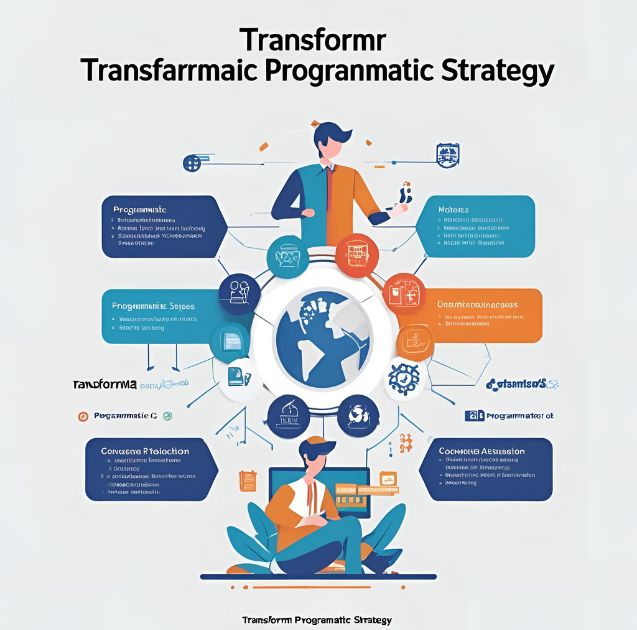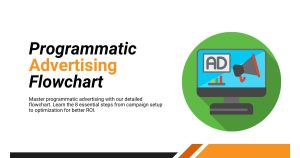Why First-Party Data is Revolutionizing Programmatic Advertising

Programmatic advertising has transformed how brands reach their audiences, but a seismic shift is underway. With third-party cookies crumbling and privacy regulations tightening, advertisers are discovering that first-party data isn’t just a nice-to-have—it’s become the cornerstone of successful programmatic campaigns.
The digital advertising landscape is experiencing its most significant transformation since the dawn of programmatic buying. Brands that once relied heavily on third-party data are now scrambling to harness their own customer insights. This shift represents both a challenge and an unprecedented opportunity for marketers willing to adapt their strategies.
What Makes First-Party Data So Powerful in Programmatic Advertising?

First-party data comes directly from your customers through their interactions with your brand. Unlike third-party data, which is collected by external companies and sold to advertisers, first-party data includes information from your website analytics, CRM systems, email subscriptions, and purchase history.
This data type offers several compelling advantages for programmatic advertising campaigns:
Accuracy and Reliability: Your customers provide this information directly, making it far more accurate than data that’s been aggregated and resold multiple times.
Privacy Compliance: Since customers willingly share this information with your brand, it aligns naturally with privacy regulations like GDPR and CCPA.
Unique Insights: No competitor has access to your specific customer data, giving you a competitive edge in targeting and personalization.
Cost Efficiency: You own this data, eliminating the ongoing costs associated with purchasing third-party data segments.
The Programmatic Advertising Ecosystem Adapts
Major programmatic platforms are rapidly evolving to accommodate first-party data integration. Google’s Privacy Sandbox, Amazon’s DSP enhancements, and The Trade Desk’s UID 2.0 initiative all prioritize first-party data utilization.
These platforms now offer sophisticated tools for:
- Audience creation based on first-party insights
- Lookalike modeling using your customer data
- Cross-device tracking through authenticated user identifiers
- Real-time bidding optimization using proprietary customer insights
The result? Programmatic campaigns that perform better while respecting user privacy.
Building Your First-Party Data Strategy
Start with Data Collection
Successful first-party data strategies begin with comprehensive data collection. Consider these key touchpoints:
Website Interactions: Track user behavior, page views, time spent on site, and conversion paths. Heat mapping tools can reveal how users engage with your content.
Email Engagement: Monitor open rates, click-through rates, and conversion data from email campaigns. This information reveals content preferences and optimal timing.
Purchase History: Analyze transaction data to understand buying patterns, seasonal trends, and customer lifetime value.
Customer Service Interactions: Support tickets and chat logs provide insights into customer pain points and preferences.
Organize and Segment Your Data
Raw data becomes powerful when properly organized and segmented. Create meaningful audience segments based on:
- Purchase behavior and frequency
- Engagement levels with your content
- Geographic location and demographics
- Product preferences and browsing history
- Customer lifecycle stage
These segments form the foundation for targeted programmatic campaigns that speak directly to specific customer needs and interests.
Implement Data Management Platforms
Customer Data Platforms (CDPs) and Data Management Platforms (DMPs) help unify disparate data sources into coherent customer profiles. These tools enable:
- Real-time data synchronization across channels
- Automated audience creation and updates
- Cross-platform identity resolution
- Privacy-compliant data activation
Executing First-Party Data Programmatic Campaigns
Audience Creation and Targeting
Transform your first-party data into actionable programmatic audiences. High-value customers can be uploaded as seed audiences for lookalike modeling. Recent purchasers might receive retention-focused messaging, while engaged non-purchasers could see conversion-optimized creative.
Dynamic audience creation allows for real-time campaign optimization. As customers move through your funnel, their programmatic targeting automatically adjusts to reflect their current stage and interests.
Creative Personalization
First-party data enables unprecedented creative personalization in programmatic campaigns. Product recommendations based on browsing history, personalized offers reflecting purchase patterns, and content tailored to engagement preferences all become possible.
Dynamic creative optimization (DCO) platforms can automatically generate personalized ad variations using your first-party insights. This approach typically delivers 2-3x higher engagement rates compared to generic creative.
Cross-Channel Orchestration
Your first-party data provides a unified view of customer journeys across channels. This comprehensive perspective enables coordinated programmatic campaigns that complement email marketing, social media advertising, and other channels.
Sequential messaging becomes more sophisticated when informed by first-party data. Customers who engage with your email campaigns might see complementary programmatic ads, while those who abandon shopping carts receive targeted retargeting messages.
Measuring Success and Optimization
Key Performance Indicators
First-party data programmatic campaigns require specialized measurement approaches:
Customer Lifetime Value (CLV): Track how programmatic campaigns influence long-term customer value, not just immediate conversions.
Engagement Quality: Monitor metrics like time on site, pages per session, and return visits to gauge campaign effectiveness.
Cross-Channel Attribution: Understand how programmatic campaigns contribute to conversions across your entire marketing ecosystem.
Audience Growth: Measure how programmatic campaigns drive first-party data collection through newsletter signups, account registrations, and other owned touchpoints.
Continuous Optimization
Regular analysis of campaign performance reveals optimization opportunities. A/B testing different audience segments, creative variations, and bidding strategies helps refine your approach over time.
Machine learning algorithms can automatically optimize programmatic campaigns based on first-party data insights. These systems continuously learn from customer interactions to improve targeting accuracy and campaign performance.
Overcoming Common Challenges
Data Quality and Hygiene
First-party data requires ongoing maintenance to remain effective. Regular data cleaning removes duplicates, updates outdated information, and ensures compliance with privacy regulations.
Establish clear data governance policies that define how customer information is collected, stored, and used. These policies should address privacy concerns while maximizing data utility for programmatic campaigns.
Integration Complexity
Connecting first-party data sources with programmatic platforms can be technically challenging. Work with experienced partners who understand both your data infrastructure and programmatic ecosystem requirements.
Many brands benefit from phased implementation approaches that gradually integrate first-party data into programmatic campaigns. This method allows for testing and refinement before full-scale deployment.
Privacy and Compliance
Maintaining customer trust requires transparent data practices and robust privacy protections. Clearly communicate how customer data is used and provide easy opt-out mechanisms.
Regular compliance audits ensure your first-party data practices align with evolving privacy regulations. This proactive approach protects both your customers and your business.
The Future of First-Party Data in Programmatic
The integration of first-party data with programmatic advertising will only deepen as privacy regulations expand and consumer expectations evolve. Brands that master this integration now will have significant advantages as the digital advertising landscape continues to change.
Emerging technologies like contextual targeting, cohort-based advertising, and privacy-preserving measurement solutions will further enhance first-party data’s value in programmatic campaigns. These innovations promise to deliver personalized advertising experiences while respecting user privacy.
Transform Your Programmatic Strategy Today

First-party data represents the future of programmatic advertising. Brands that embrace this shift will build stronger customer relationships, improve campaign performance, and create sustainable competitive advantages.
Start by auditing your current data collection practices and identifying opportunities for improvement. Invest in the technology and expertise needed to effectively leverage your first-party data in programmatic campaigns. Most importantly, maintain focus on delivering value to your customers while respecting their privacy preferences.
The transition from third-party to first-party data programmatic advertising isn’t just a technical shift—it’s an opportunity to build deeper, more meaningful relationships with your customers while driving better business results.





